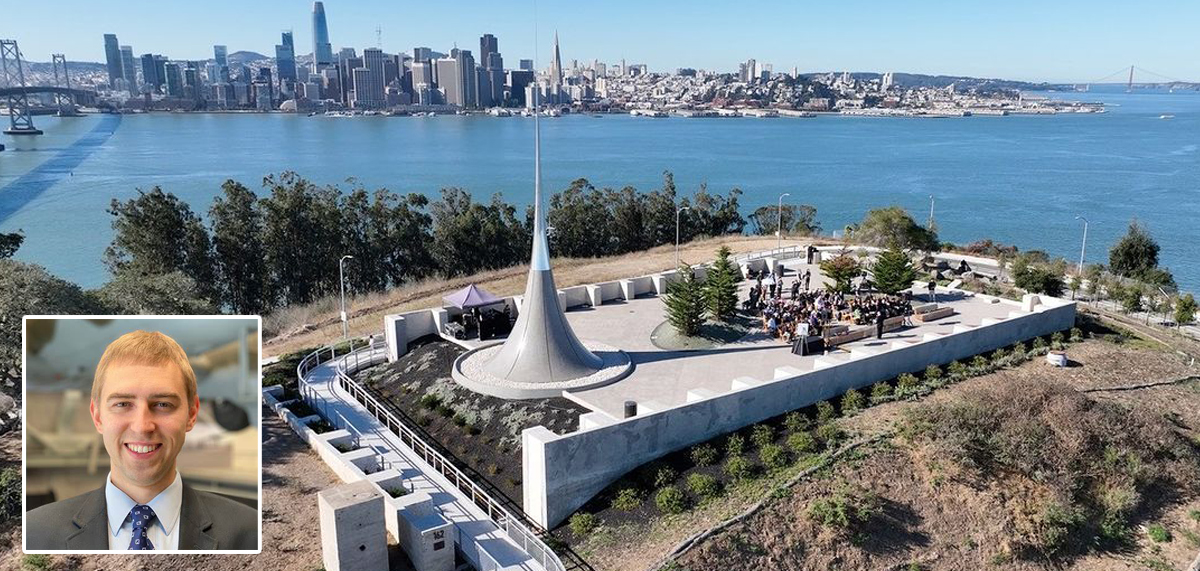Remarks from Tyler R. Bamford, PhD, Naval History and Heritage Command
(PDF)
October 24, 2024
Yerba Buena Island, San Francisco, California –
It is an honor to be here today to celebrate the unveiling of these panels, which tell the story of the Port Chicago disaster and trial, but also to pay solemn tribute to the US Navy sailors who faced racial discrimination and injustice while performing an essential and extremely hazardous wartime service to their nation.
When the predominantly 18, 19, and 20-year-old African American sailors serving at Port Chicago joined the US Navy following the outbreak of World War II, they quickly discovered that they had entered a service which at that time did not consider them to be the equals of white recruits. Denied the same opportunities as white sailors, these men were assigned to a segregated ammunition handling “labor battalion” commanded by white officers who for the most part viewed them as inferior to white sailors and useful only as unskilled laborers.
Yet despite the harsh and unfair treatment that the Black sailors at Port Chicago endured, when disaster struck on the night of July 17, 1944, the survivors of that horrific explosion responded with courage that went above and beyond the call of duty. As fires ignited by the explosion broke out among train cars loaded with ordnance, Black sailors ran towards the flames rather than away from them. The commanding officer of Port Chicago told newspaper correspondents how a number of these men moved “boldly into a danger area around boxcars loaded with ammunition” in order to quell the flames. The commandant of the 12th Naval District similarly praised the African American sailors at Port Chicago who “performed bravely and efficiently in the emergency.” He declared to reporters that, “as real Navy men, they simply carried on in the crisis attendant on the explosion, in accordance with our service’s highest traditions.”
Less than two weeks later, however, the very same officers who offered this public praise denounced and threatened 258 of these Black sailors with imprisonment and even execution when they refused to return to loading ammunition under the command of the same officers who fostered dangerous working conditions prior to the explosion. When 50 of these Black sailors still refused to resume loading ammunition at Port Chicago, it was an act of great courage.
Their trial became a rallying cry for the rights of African Americans in uniform, though they were not alone in protesting for equality. Thousands of other African Americans in uniform staged their own personal and organized protests against unfair treatment and dangerous working conditions. In just one example, a thousand Black sailors of the Navy’s 34th Construction Battalion who had served almost two years overseas on the islands of Tulagi and Guadalcanal in the Pacific staged a hunger strike in Port Hueneme, California after their white commanding officer refused to promote Black sailors or assign them to any tasks other than unskilled manual labor. Nineteen of these men were charged with seditious behavior. Throughout the Navy, Black sailors observed white men with less training and experience get promoted and assigned to skilled jobs, while Black sailors were restricted to the most menial and backbreaking labor. Off duty, Black sailors were forced to use segregated facilities on and off of military bases across the country, and in many parts of the United States they risked being assaulted, arrested, or killed by civilians or local authorities just for wearing their uniform outside of military installations.
In July of this year, Secretary of the Navy Carlos Del Doro set aside the remaining 256 convictions of the Port Chicago sailors due to significant legal errors that compromised the fairness of their trials. But in order to truly right past wrongs, it is not enough to change the record. We must also ensure that the stories of those who suffered and died because of unjust policies are remembered. This monument will do just that by serving as a permanent reminder to all who see it. And when visitors come here, I hope that they do not just read the words on these panels, but that they also feel the significance of this place and reflect that on this very island, Black US Navy sailors stood up for their rights.
Monuments such as this show our resolve to learn from the past and help ensure that these mistakes are not repeated. As Rear Admiral Sam Cox, director of the Naval History and Heritage Command, wrote, “even in the darkest of times there is heroism and courage, physical and moral, that deserve to be remembered, as well as lessons learned at great cost.” And so I want to thank the staff of the Treasure Island Museum, the Treasure Island Development Authority, and especially Walt Bilofsky for being the driving force to honor and remember the Port Chicago sailors through these panels. May they forever serve as a testament to the resolve of the sailors who were unjustly convicted here and as a reminder to everyone who sees them that equality and justice require, among other things, a willingness on the part of all Americans not to ignore the painful episodes in our history but rather to acknowledge and constantly work to rectify them.
Thank You.
Tyler R. Bamford, PhD, Naval History and Heritage Command
FOR FURTHER INQUIRIES PLEASE CONTACT: NHHC_PUBLICAFFAIRS@US.NAVY.MIL
October 24, 2024
Commemorating 80 Years: Reflections on the Legacy of the Port Chicago Mutiny Trial
Remarks from Tyler R. Bamford, PhD, Naval History and Heritage Command

